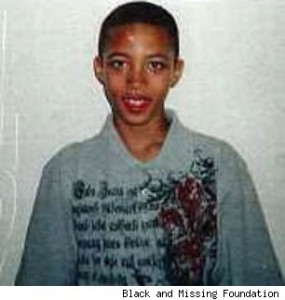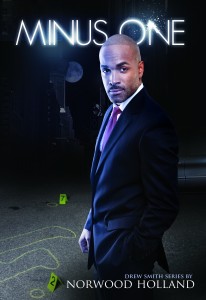Black Lives Have Less Value
June 9, 2010
 Anthony Thomas and Kyron Horman: Two Missing Boys Demonstrate Disparity in Coverage
Anthony Thomas and Kyron Horman: Two Missing Boys Demonstrate Disparity in Coverage
It’s sad and unfortunate that two boys suddenly vanish without a trace. We ask ourselves a great many questions like who would do such a thing and why. Then there is the question why are greater resources brought to bear in the search for one over the other. Unfortunately, these are editorial decisions that reflect editorial values over community values. The unmistakable conclusion, Kyron Horman is white and has garnered national media attention while Anthony Thomas is black and has received neither local nor national media attention and that black life has less value.
ABCs and Lessons Learned
May 21, 2010
Requiring those perceived as aliens to carry proof of citizenship is not a new phenomenon. It was a common practice required of ABCs (American Born Chinese) subjected to restrictive immigration laws beginning shortly after the Gold Rush of 1849 through the mid 20th Century. Iris Chang in her book The Chinese in America presents a compelling narrative of the Chinese American experience illustrating American racism in a different hue as profound as the contrast between black and white. California state and federal codes are replete with acts and statutes hostile to Asian Americans. The Chinese American experience is another shameful chapter in American history and particularly American jurisprudence.
No variety of anti-European sentiment has ever approached the violent extremes to which anti-Chinese agitation went in the 1870s and 1880s. Lynching, boycotts and mass explulsion. (John Higham, Stranger in the Land: Patterns of American Nativism, 1860-1925) Untold numbers of Chinese were deported from 1890 to 1920, according to Chang the number of male Chinese in the United States (at the time 95% of the Chinese population dropped from 103,620 to 85,341). Men were awakened and dragged from their homes under cover of night. During the raids, inspectors often demanded to see residence certificates needed by Chinese to stay in the United States. Inspectors often confiscated the documents without providing receipts, causing the owners months of agony, knowing they could not prove their legitimate right to reside in the United States. If the Chinese could not produce the certificate, they were expected to explain how they had lost them, which was impossible for many to do. Some immigrants exhausted their entire life savings paying legal bills and hiring detectives to locate witnesses to testify on their behalf.
The deportation process was horrendous. According to a 1913 report compiled by the Chinese Chamber of Commerce and Chinese American League of Justice of Los Angeles, the Chinese deportees were packed into railroad cars “unfit for the transportation of cattle,” poorly fed, and then herded into the holds of ships, where there endured “real torture, especially in the summertime,” when the ship sailed to the equator. With constant danger of such deportation hanging over their heads the Chinese were vulnerable to legally sanctioned blackmail and could be fleeced mercilessly by officials and hoodlums alike. (Chang) The Supreme Court conferred jurisdiction to the secretary of commerce and labor to hear immigration matters with determinations decidedly final and without judicial review. U.S. citizenship was commonly stripped from Americans of Chinese descent. The law and actions proved to be embarrassing when China and the United States became allies during World War II.
During economic downturn the defenseless become scapegoats. Americans should not repeat the lessons of the past. The Constitution and its protections of due process and equal protection cannot be lightly tossed aside. Respecting rights of all men native or foreign born is fundamental to our constitution and core values.
Incognizant Racism
May 14, 2010
Washingtonian magazine annually surveys DC’s top doctors, lawyers, and dentists. I was puzzled when its list of top dentists failed to include a single African American in a city 60% Black most of whom patronize Black dentists. Washingtonian is a monthly magazine distributed in the DC area since 1965 described as the magazine Washington lives by, focusing on local feature journalism, guidebook style articles, and real estate advice. It tends to give short shrift to communities of color and particularly the well educated upper middle class African American. An explanation can be found in Don Heider’s book White News: Why Local Programs Don’t Cover People of Color.
Heider studied two news broadcast markets in Honolulu and Albuquerque. African Americans are not the dominant minority but included communities substantially populated with other people of color: Asians, Latinos, and Native Americans. The study was conducted 10 years ago when the white population of Albuquerque was 51% while Honolulu had no racial majority. Heider’s thesis was “to understand how and why certain content does or does not end up on the air in a particular local station’s newscasts” and to understand the process and structure that govern news decisions. He concluded the dominant influences on this process are hegemony and ownership.
The study focused on a newsroom in each market and made the expected observations that top news managers were white males verifying a consistent contention by the U.S. Civil Rights Commission that white males are the gatekeepers of the U.S. media. As a consequence little importannce and coverage are attached to issues involving non-white communities such as, gentrification, affordable housing and displacement, environmental racism, development and education. Workplace diversity was superficial with minority anchors and coverage limited to crime and festivals.
Incognizant Racism, a theory advanced by Philomena Essed in Understanding Everday Racism supports the proposition that hidden under the surface of diversity there is a strong tendency among Whites in the United States to assume superiority of Euro-American values. Hidden also is the expectation that in due time Blacks must accept the norms and values of the Euro-American tradition as superior and that adaptation is the only way to progress in American society. As Heider argues, ownership and day to day practices work together to systematically exclude certain groups thus marginalizing issues important to their communities.
In explaining the process of incognizant racism within the newsroom Heider found some reporters tried to cover relevant issues, some realized more needed to be done, and still others did not even have a level of awareness, yet all worked together to produce a product that consistently excluded stories about entire segments of the viewing audience. The practice results in racist coverage that is a distinctly different kind of coverage of people of color than exists for the White population.
Washingtonian’s claim of presenting the best while excluding significant others lacks credibility. How about calling it what it is: a list of DC’s best white dentists. One solution is certain, minority communities need to own and control their own media outlets and not sell out to corporate conglomerates.
Taboo the Issue of Race
March 24, 2010
Growing up in the South and being amongst the first generation to integrate public schools I’ve always noticed how discussions of race with whites can cause discomfort–a subject many would rather not engage. It was one such discussion that prompted this blog. I pitched a story to Sheri Dalphonse Editor of the Washingtonian magazine on an local African American filmmaker and his efforts to turn his award winning short into a feature film. I got the idea after reading a similar story in the prior editon about similar efforts of two white male filmmakers. The editor rejected the pitch. I questioned why white filmmakers merited coverage but the African-American did not. Offended she declared race had nothing to do with it. I left it that. Months later I pitched another story about and a remarkable artist and ex-con that almost made it into print. I sensed her lack enthusiasm believing the subject would not interest Washingtonian’s upper crust white audience.
I knew the risk of raising race and offending the editor would not help getting me into print, but I couldn’t let it go. A year later the Washingtonian ran an article on the top 100 dentist in the Washington area–all white. The editor claimed the survey method was unbiased relying on the local dentist and members of the American Dental Association. I raised the fact that Washington DC was 60 percent black and most black folk patronize black dentists. I questioned why no black dentists were represented at the top. Again, I had offended but the offense gave serious pause for thought, qualifications and patient satisfaction were not determinative.
I let her know that her survey was biased because she neglected to contact any dentist in the National Dental Association. Huh? Unaware the African American dental profession like the medical and legal professions as a result of a history of discrimination had formed their own professional associations, a time honored tradition. The editor had in fact unintentionally discriminated. I had enlightened her and she promised to include the National Dental Association in the next annual survey. I also noticed the magazine has since hired an African American staff writer a former local TV news reporter.
By confronting the taboo I raised the Editors conscience and paved a way for the opportunity of another. The Washingtonian may never publish any my work because of my ethnic outlook, but they’ll think twice about excluding ethnic content in the future. The Washington community is made up of Asians, Latinos, Blacks and others. It’s important to engage discussion on race and ethnicity no matter how uncomfortable—it just good business. A history of opportunity denied by countless editors caused a certain self-reliance. I have herein made my own.
What Were They Thinking?
March 4, 2010
This week three white male Los Angeles elementary school teachers were placed on administrative leave after orchestrating a stunt giving the students portraits of O.J. Simpson, Dennis Rodman and RuPaul to carry in a Black History Month parade. The celebrities are not historical figures so what was the point? What was the intended message? O.J. Simpson, once Heisman trophy winner, NFL player, sports broadcaster, actor and accused killer on the road to perdition lost his fame. Dennis Rodman is another retired athlete and NBA star now known for his celebrity antics. And there’s Rupaul an actor, drag queen, model, and singer-song-writer. The celebrities are neither a credit nor a disgrace to their race. They are just men who happened to be Black. What where these teachers thinking, that’s what I want to know. Was it mean spirited mischief? We may never know.
Teachers are supposed to create a learning environment conducive to optimum achievement academically, socially, and emotionally. They are to be models of decorum and respect guiding students as well as honoring them. This is in no way to honor Black history but only reinforces racist attitudes and a lack of appreciation of other ethnic cultures.




